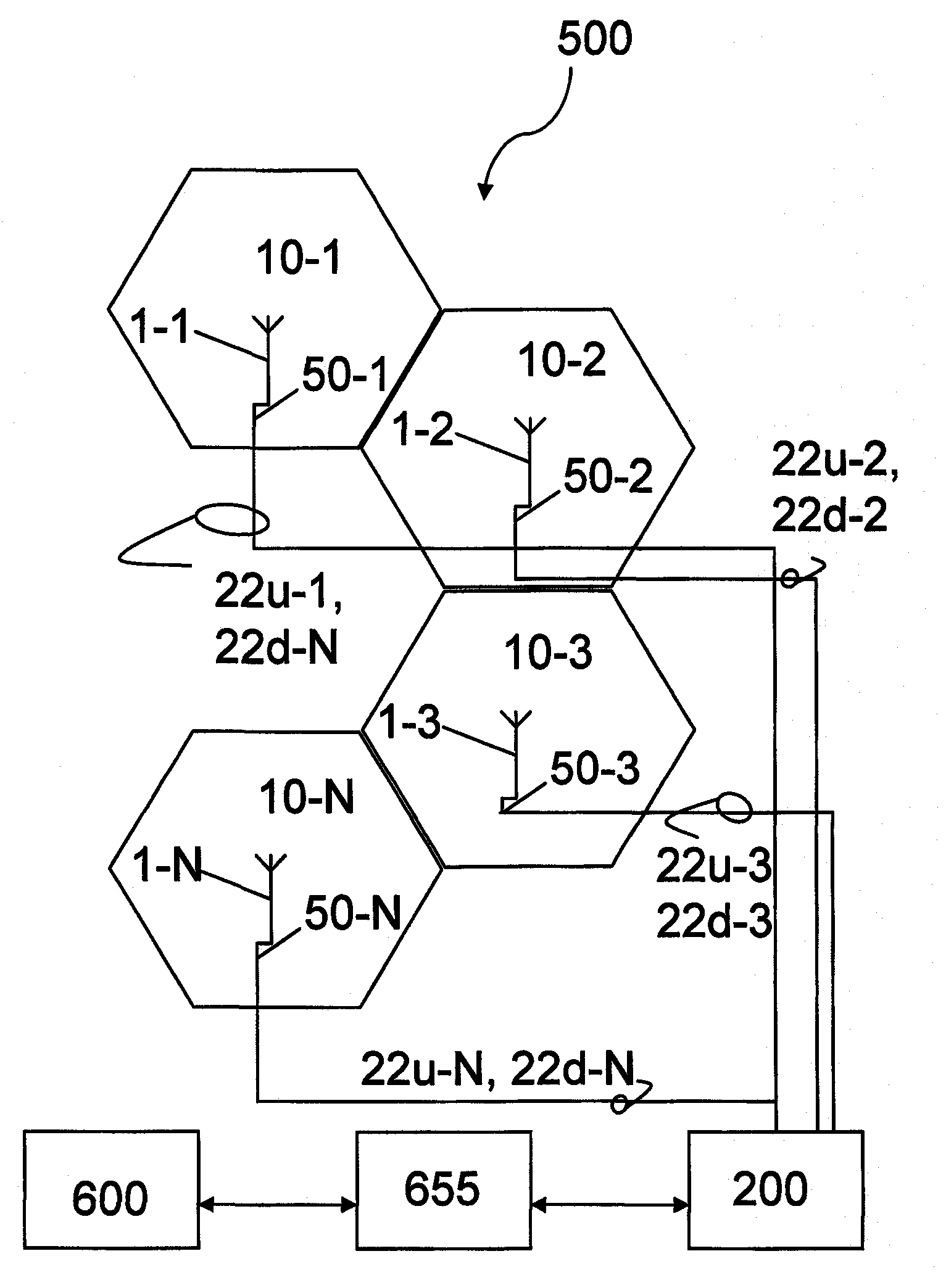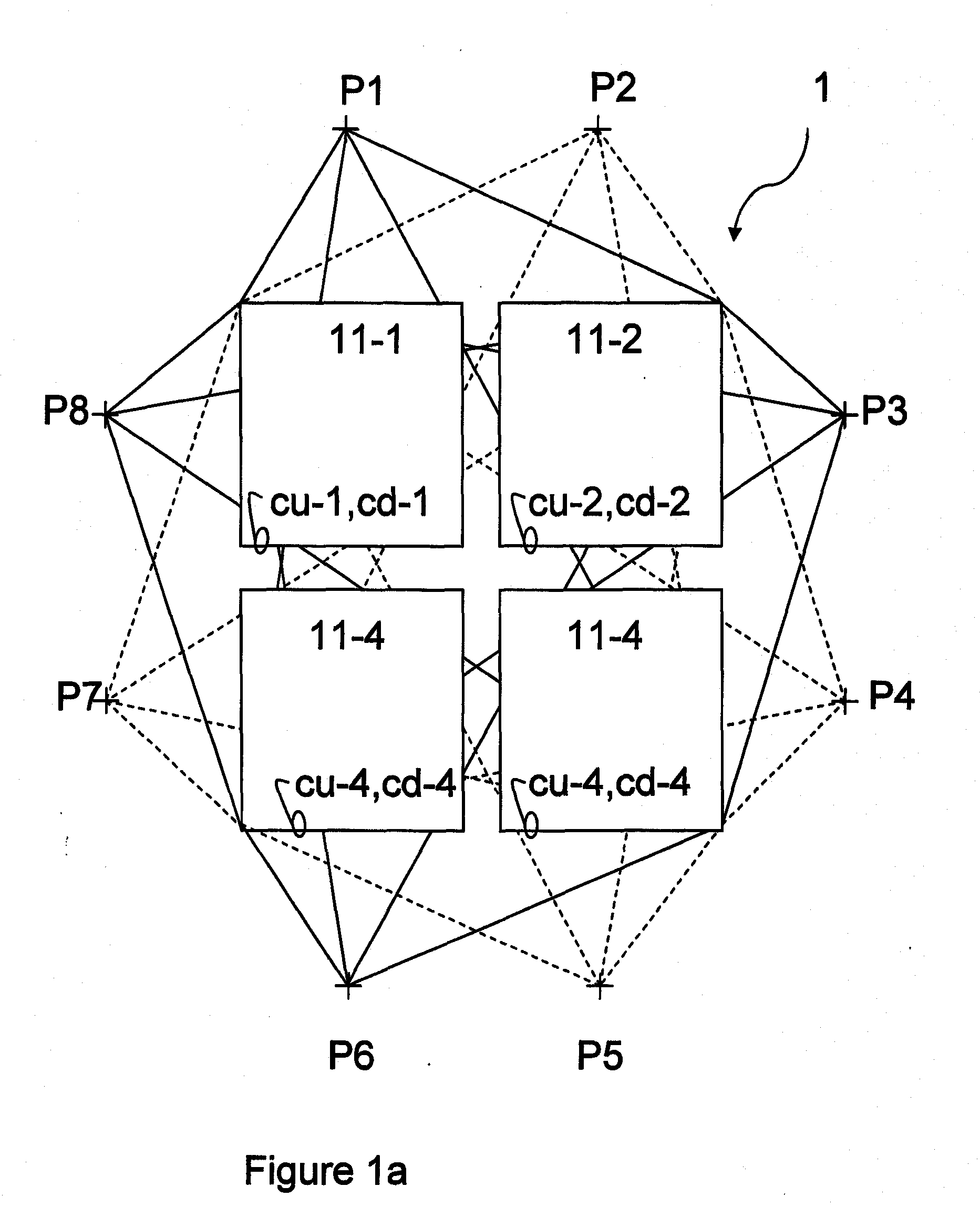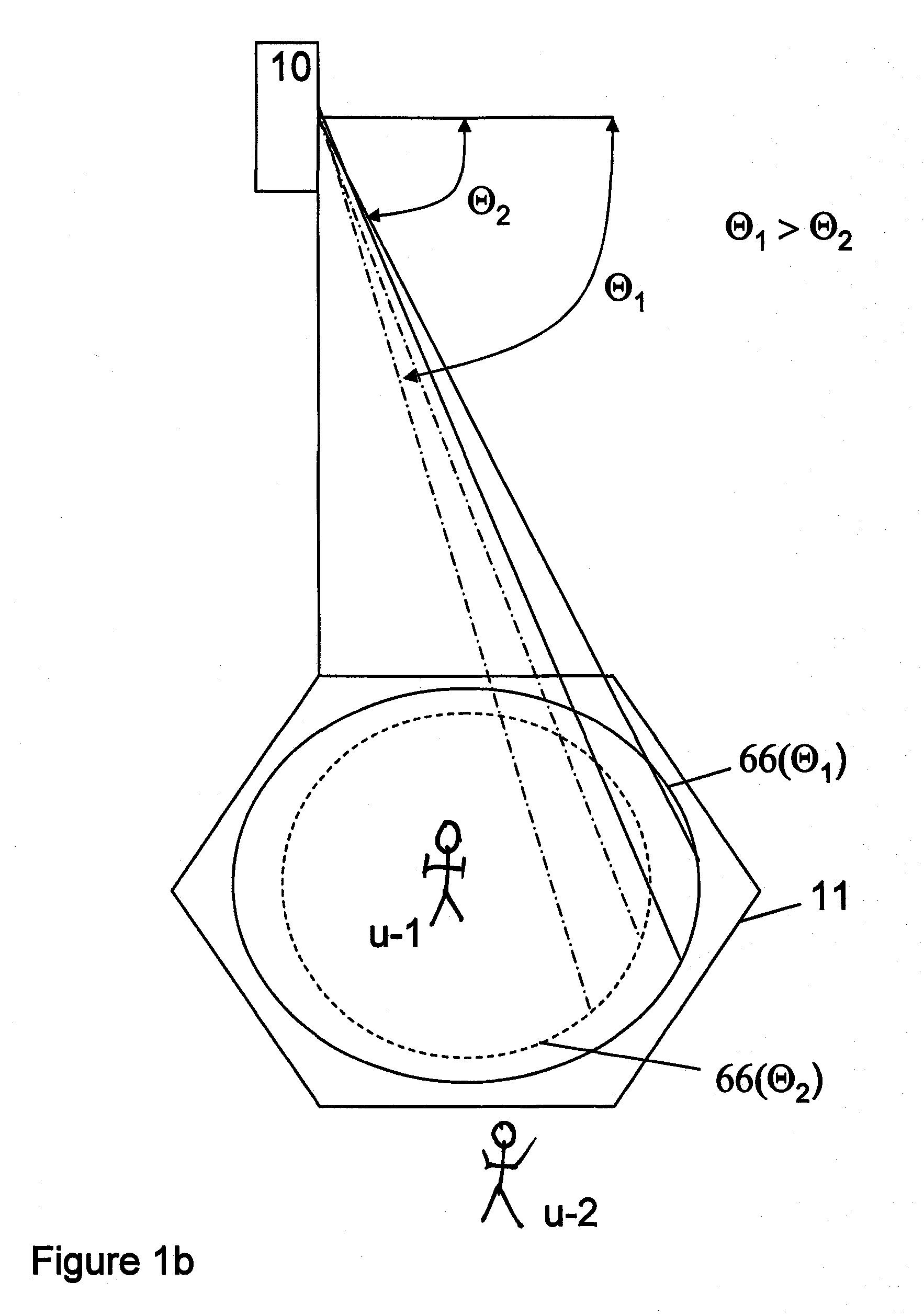Antenna array, network planning system, communication network and method for relaying radio signals with independently configurable beam pattern shapes using a local knowledge
a technology of local knowledge and antenna array, applied in the field of antenna array with independently configurable beam pattern shape, can solve the problems of increasing the number of base stations, increasing the interference level between the cells of the mobile communication network, and increasing the interference caused by users outside the cell
- Summary
- Abstract
- Description
- Claims
- Application Information
AI Technical Summary
Benefits of technology
Problems solved by technology
Method used
Image
Examples
Embodiment Construction
[0041]For a better understanding of the present disclosure reference shall now be made to preferred aspects of the present disclosure, examples of which are illustrated in the accompanying drawings.
[0042]FIG. 1a shows an antenna array 1 of the present disclosure. The antenna array 1 comprises four antenna elements 11-1, 11-2, 11-3, 11-4. Without any limitation the antenna array 1 may comprise more than four of the antenna elements 11-1, 11-2, . . . , 11-j. Antenna arrays known in the prior art allow a beam steering. The beam steering is provided by providing a defined phase and amplitude relation between the antenna elements 11-1, 11-2, . . . , 11-j. In the prior art the phase and amplitude relation is fixed between individual ones of the antenna elements 11-1, 11-2, . . . , 11-j. Typically passive combiner networks are used in order to combine a received signal. Likewise fixed amplitudes and phases are used in order to provide the defined phase and amplitude differences between the...
PUM
 Login to View More
Login to View More Abstract
Description
Claims
Application Information
 Login to View More
Login to View More - R&D
- Intellectual Property
- Life Sciences
- Materials
- Tech Scout
- Unparalleled Data Quality
- Higher Quality Content
- 60% Fewer Hallucinations
Browse by: Latest US Patents, China's latest patents, Technical Efficacy Thesaurus, Application Domain, Technology Topic, Popular Technical Reports.
© 2025 PatSnap. All rights reserved.Legal|Privacy policy|Modern Slavery Act Transparency Statement|Sitemap|About US| Contact US: help@patsnap.com



